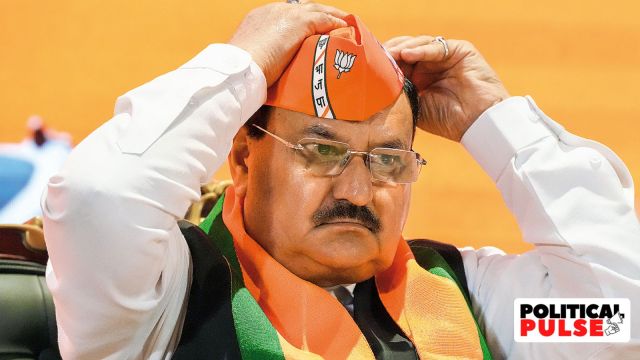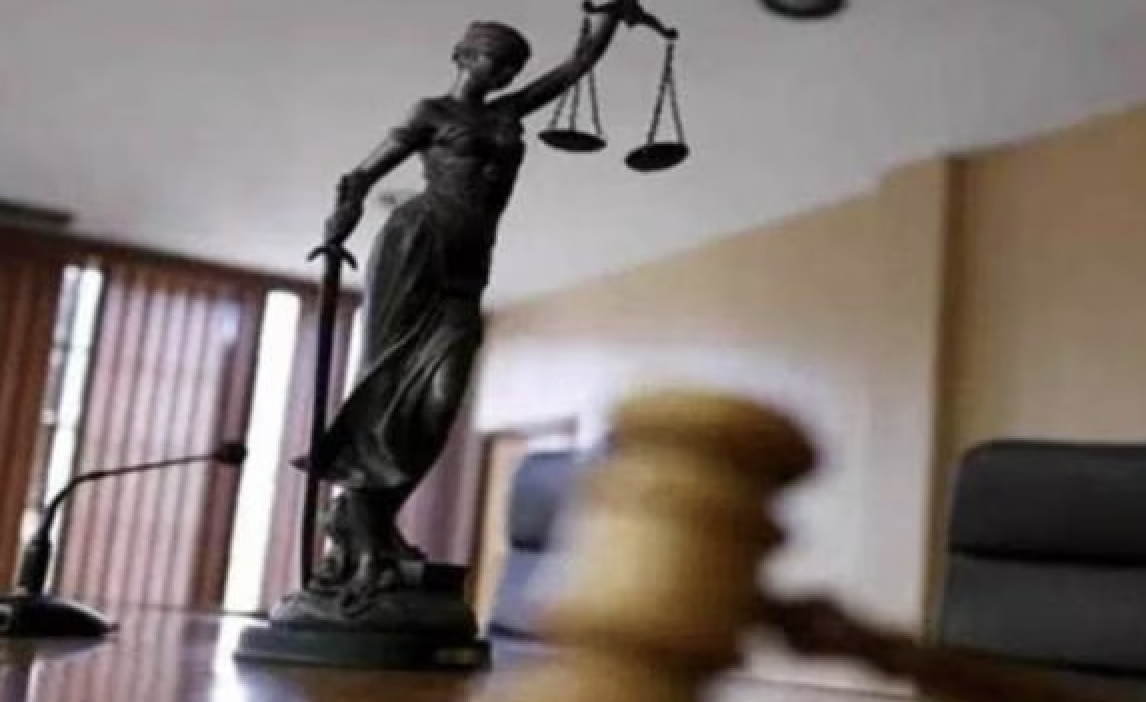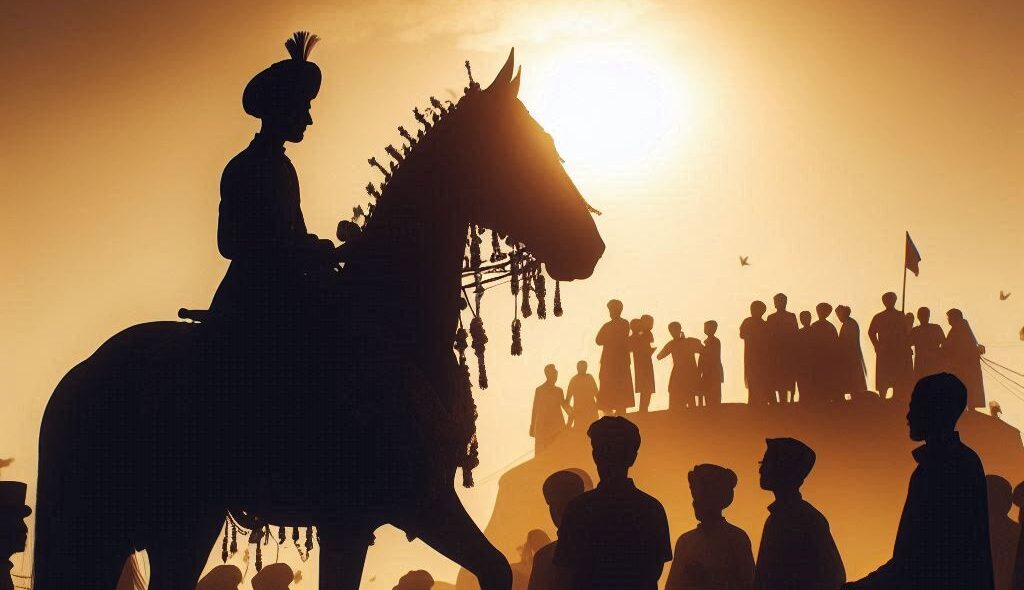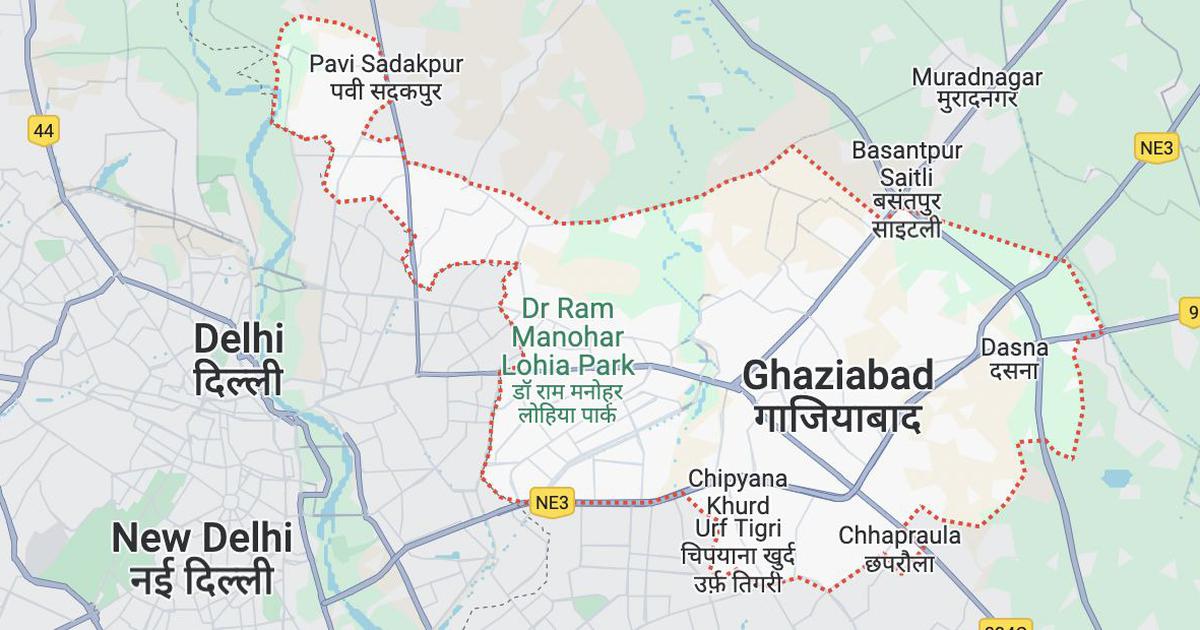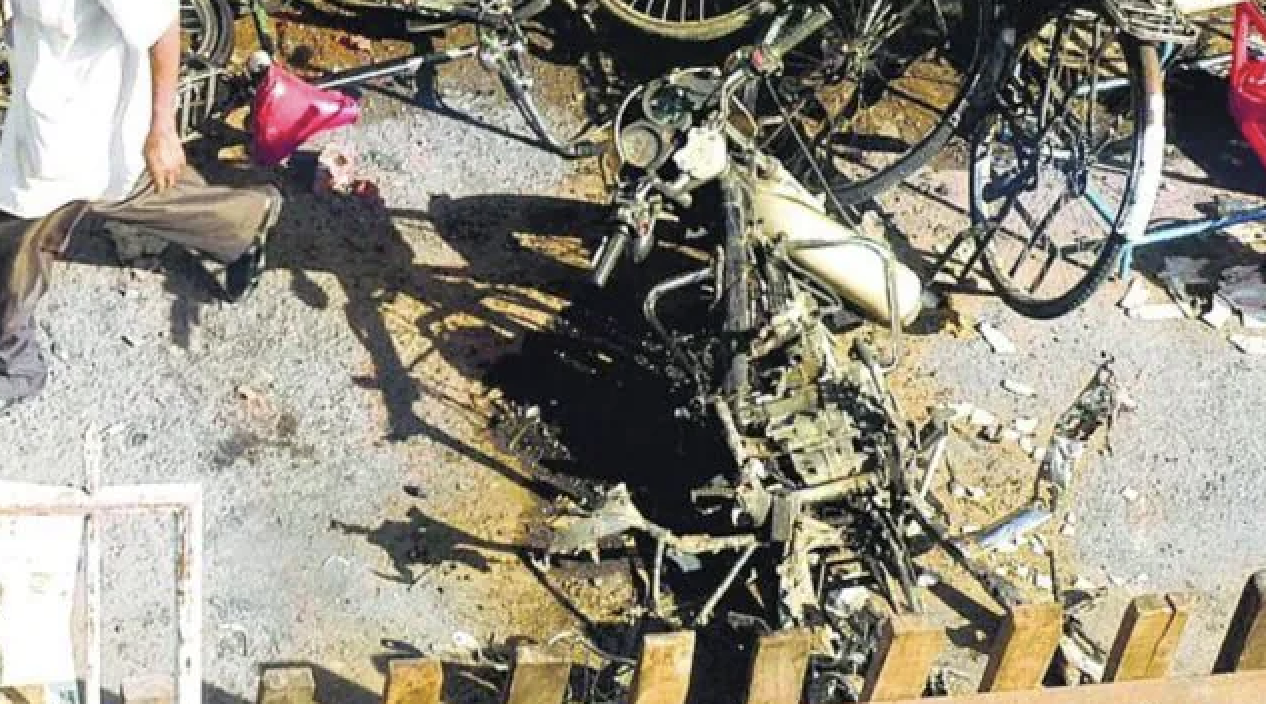
By Syed Khalique Ahmed / India Tomorrow
NEW DELHI—Two optical shops belonging to a Muslim trader were looted and set afire in Vadodara (formerly Baroda) during the 2002 anti-Muslim riots that had claimed about 2000 lives, mostly Muslims. The shop owner had suffered losses running into lakhs of rupees.
With hard work and strong determination, he is now the proud owner of five optical shops in the city, three of them in upmarket shopping areas. These shops are now the favourite destination for anyone looking for quality eyesight glasses and glass frames.
The same is the story with other Muslim business people who had suffered considerable losses in Vadodara and other parts of Gujarat. Almost all of them have set up their businesses again. If these businessmen are to be believed, their trade and businesses have multiplied manifold and are earning much more than what they did before the riots.
A dealer in high-end automobile vehicles had suffered losses to the tune of several crores as all the four-wheelers in his showroom and godowns in Pratap Nagar area, Vadodara, were burnt, and his bungalow in an all-Hindu posh locality was completely destroyed. Though he had to sell his bungalow and shift to a Muslim-dominated area for safety purposes, he re-established his automobile business.
Thousands of shops, hundreds of commercial establishments, hotels, restaurants, godowns, and factories belonging to Muslims were looted and destroyed in Vadodara, Ahmedabad, Bharuch, Surat, and other places by miscreants. About five lakh people were displaced from their native places due to attacks by miscreants.
Vadodara-based business Munir Khairuwala says that Muslims have progressed tremendously in every field after the riots in February-March 2002. “Every riot victim has progressed in a geometric proportion”, he claims. “With help from Muslim organizations and by using their own savings, Muslims set up their businesses again. Today, they are doing roaring business. Those who had one shop earlier have two shops now. And those who owned two shops have set up four shops and doing good business,” he claims.
“Earlier, Muslims were operating in a few areas only. But, now, they have spread to upmarket and mixed areas as far as doing the businesses is concerned,” he says. However, he says that neither the state government nor any other government agency contributed a single pie to help Muslims stand on their feet again.

After the riots, Muslims have become the owners of most hotels and restaurants along the national and state highways in Gujarat. They are also owners of many restaurants and hotels in Ahmedabad, Vadodara, and Surat. However, one cannot identify them by their names. This is because they don’t use Muslim names for their businesses. To hide their identity, they use Hindi and Sanskrit names like Tulsi, Aditi, Parsoli, Deep, etc., for their hotels and companies to avoid discrimination. This strategy has brought success to them.
Muslim business people also constructed multi-storeyed buildings, each having 200 to 1000 flats, with parking and other facilities, particularly in Ahmedabad and Vadodara. As Muslims left mixed areas due to fear of security, they built up houses and bungalows adjoining old Muslim areas. This resulted in Muslim ghettoization. But the segregation of the Muslim population happened due to the attack on their lives and property by Hindu radicals and the failure of the state to provide adequate security to Muslims in mixed population.
Mufti Ahmed Devlavi, a well-known religious figure of South Gujarat, opines that the riots generated reawakening among Muslims about establishing institutions like educational centres and medical facilities. While riots took the lives of hundreds of Muslims and resulted in enormous economic loss to the community, Muslims felt helpless about the treatment of patients during the riots and after, as there were few medical facilities available in Muslim areas. Moreover, Muslim students faced problems even appearing at board examinations because all the schools and colleges were in non-Muslim areas where Muslim students, particularly the girl students, did not feel safe even after months of the riots because the overall atmosphere was not conducive for the safe movement of Muslims. In the changed circumstances, the community felt the dire need to establish schools, colleges, hospitals, and other infrastructure facilities to fulfill their basic needs.
“The extreme kind of adversity created awareness in the Muslim community to invest their money in education and health infrastructure as well,” said Devlavi. “The period after 2002 riots in Gujarat can be called a renaissance for the Gujarati Muslims,” he comments.
Mufti Devlavi, who runs the Jamia Darul Quran, an Islamic seminary at Jambusar in the Bharuch district, set up a multi-specialty hospital with a special arrangement for gynaecology patients, a high school, and an Industrial Training Institute (ITI).
If Vadodara-based social worker Zubair Memon is to be believed, Muslims have invested hundreds of crores of rupees in education and health sectors all over the state since 2002. He says that hundreds of schools and colleges, big and small, have come up all over the state, including rural and interior areas. Setting up schools, says Zubair, has also increased the enrolment of Muslims and curbed their dropout rate. However, he feels the educational facilities in Muslim areas are still inadequate, and more efforts need to be undertaken to bring an educational revolution in the community. Some of the schools set up during the last two decades are Hanifa School (CBSE affiliated and residential and 10 percent of its students are no nun-Muslims) in the interior of Anand district known for bringing White Revolution(milk production) in the country, an educational complex at Napa village, adjoining Anand, with courses from school level to post-graduation in arts, commerce and sciences streams, Nakadar Institute of Knowledge in an interior area of Mehsana district particularly catering to rural population of the district, Scholar school and college set up in Himmatnagar by social activist Dr. Bilal Sheth and his associates and Radiance school in Modasa, near Rajasthan border, by the Sukoon Trust. Bharuch in the central Gujarat region and home to the wealthiest Gujarati Muslims settled overseas did not have any good school or college before 2002 but had the biggest madrasas of the state. But the humiliation of the community in the 2002 riots changed the community’s mindset. It now boasts of having set up several schools, colleges, and hospitals. Late Maulana Abdurrahman Matadar, a former senior functionary of the Jamaat-e-Islami Hind, established a school and college for boys and girls, besides a technical institute and a Bachelor of Computer Applications (BCA) college on the outskirts of the city. Another philanthropist set up the Matliwala Public School at Matliwala in Bharuch and a hospital at Kharod village, adjoining the Bharuch’s industrial belt on National Highway Number 8, and Yashfin Hospital in Navsari. The late Congress leader Ahmed Patel established two multi-specialty hospitals: one in his native Piraman village and another in Ankleshwar that former President of India Pranab Mukherjee inaugurated. The hospital in Piraman village was set up by HMP Gramya Vikas and Kalyan Foundation, founded in memory of Reliance Industries founder Dhirubhai Ambani. HMP stands for Hawwaben(Ahmed Patel’s mother) and Mohammedbhai (Ahmed Patel’s father) and their surname Patel. The mobile clinic run by HMP Foundation provides medical treatment to tribals in deep interior areas of the Bharuch and Narmada districts.
Islamic Relief Committee of Gujarat (IRCG), floated by the functionaries of the state unit of the Jamaat-e-Islami Hind, rebuilt the mosques and Muslim houses in Kwant, Panwad and several other areas in tribal-dominated Chhotaudepur district that the miscreants bulldozed in 2002. IRCG resettled in Panwad more than half a dozen tribals who had converted to Islam about half a century ago. While they were not physically harmed, their houses were demolished and driven out of their village. The local Muslim people in business also built a CBSE-affiliated senior secondary school at Chhotaudepur in the heart of the tribal belt near the border with Madhya Pradesh. IRCG also built houses for the riot victims of Panderwada village in the Panchmahals district (Godhra) and made a borewell to provide a drinking water facility for the entire village population. Earlier, poor Hindus used to buy drinking water from the borewell of wealthy Hindus. However, the IRCG water supply is accessible without payment for Hindus and Muslims.
Zidni Ilma Trust (formerly Baroda Welfare Society), promoted by noted human rights activist Prof. Juzar S. Bandukwala, did yeoman’s service to promote the cause of humanity. It provides scholarships to children of poor Muslim families for medical, engineering, and other professional courses. Dr. Mohammad Hussain, a physician by profession, who became the trust’s president after the demise of Prof. Bandukwala recently, says that more than 5,000 students have so far benefited from the trust. According to Dr. Hussain, among the beneficiaries are about 1,000 candidates who have acquired MBBS and post-graduate medical degrees, besides 1500 engineering candidates. The trust disbursed Rs. 65 lakh as scholarship during the current academic year. Among those contributing to the trust’s funds is Nobel Laureate Venki Ramakrishnan, a former Prof. Bandukwala at MS University of Baroda. ZIT’s activities, therefore, educationally empowered the poor sections of the Muslim population, uplifted them economically and socially, and brought revolutionary changes in the new generation, many of whom have not seen the orgy of 2002 violence. A few years ago, Baroda Muslim Doctors’ Association (BDMA) established an advanced diagnostic centre with CT scans, X-rays, and other facilities at the cost of over Rs. Three crore to provide free-of-cost facilities to poor people at concessional rates to other patients.
The riots also brought revolutionary changes among the Muslim clergy of Gujarat about the relevance and importance of modern education. Madrasa Darul Uloom, Tandalja, on the outskirts of Baroda, has set up a CBSE-affiliated senior secondary school in its premises in which pass-outs from the madrasa also take admission to learn modern subjects. Mufti Imran, a product of Nadwatul Ulema, Lucknow, set up the Fatima Zohra School for Girls in the Muslim-dominated area of Panigate.
According to Dr. Hussain, the Hijab controversy in Karnataka has further shaken the local Muslim population and induced them to come out of their hibernation. He says many Muslim clerics are now contemplating setting up more modern Muslim educational institutions to ensure that Muslim girls can obtain an education while practicing their own culture and religion. The existing institutions, Dr. Hussain says, are inadequate keeping in view the rapidly increasing demand.
Ahmedabad-based activist Mujahid Nafis running Gujarat Minority Coordination Committee (GMCC), opines that the Muslims had lost trust in the government due to its questionable role during the riots. As they felt that the government would not do enough for their development, Muslims mobilized funds and set up schools, hospitals, and other infrastructure in their areas. The government, he says, instead of giving schools and medical facilities, set up police stations and chowkies in Muslim-dominated areas, giving a bad name to Muslim residential segments of the city. For Example, Ahmedabad’s Juhapura, the biggest Muslim pocket of Gujarat, is housing the Vejalpur police station, several police chowkies, an office of assistant commissioner of police, and Gujarat’s Special Operations Group (SOG) centre. This is despite the fact that the incidence of crime in Juhapura is among the lowest compared to the neighbouring non-Muslim areas. The SOG is housed in the premises of an agriculture college in the heart of Juhapura. When the college was closed down, the local Muslims demanded that premises be given to some trust to run a school, but the state government refused and instead brought the SOG office there. According to Nafis, mushrooming of police centres creates awe and fear among Muslims.
Despite severe odds and no change in the attitude and role of the state government, things have improved tremendously in Ahmedabad with the hard work of Muslim NGOs and others. Gujarat Sarvajanik Welfare Trust, headed by businessman Afzal Memon, a Tablighi Jamaat activist, has built a chain of seven senior secondary schools under Shama Group of Schools in the city, a Nutan Bharatiya Vidyalaya in Bapunagar, two branches of Farooq-e-Azam School, a physiotherapy college, a B.Sc. Nursing College, a General Nursing College, and an ANM Paramedical College. His trust has also set up Al-Shifa Hospital in Jamalpur with the latest medical equipment and round-the-clock emergency facilities. “The riot had badly ruined the Muslim community. But the things are now looking up,” he says. Memon says that awareness about education has increased after the riots, but Muslims are still very backward in education. He feels that poverty is the main reason Muslim boys and girls remain behind in education. Ahmedabad Muslims purchased two schools run by trusts belonging to Hindus. The Hindu managements was not interested in running them because the strength of Muslim students had gone to more than 90 per cent in these institutions. But the Hindu owners must be appreciated for selling and transferring the two institutions to Muslim groups, indicating that Hindus in general are not hostile to Muslims. While one of them, the Shantiniketan School, is located on the borders between Muslim-majority Juhapura and Hindu-majority Vejalpur, the Ankur School is located in an upmarket and 100 percent Hindu-neighbourhood. The strength of Muslim students in St Xaviers School in Mirzapur in Ahmedabad has gone up almost to 90 per cent of the total because of the rising demand from the Muslims and avoidance of Hindus sending their children to Christian institutions because of the negative propaganda of religious conversion fanned by Hindu groups and the school being located in a Muslim dominated area.
Several other institutions like Iraq Hospital and Amina Khatoon Multi-Speciality Hospital came up in Juhapura, apart from a big hospital in Daryapur in old Ahmedabad. Several schools and dispensaries have also come up in Muslim pockets post-2002, catering to the local requirements.
With the help of human rights organizations, Muslims of Gujarat also courageously fought a prolonged legal battle to get justice. Teesta Setalvad, hailing from an illustrious Gujarati family and settled in Mumbai, has become the synonym of the fight for human rights and a household name in Muslim families in Gujarat because of her strong commitment to defending the human rights of the poor and the oppressed. Though no accused has been hanged for the heinous crimes of 2002, including the brutal killing of former MP Ehsan Jafri, many people were given life terms, and many of them are serving their terms in jails. Such a large number of accused were never punished in any of the communal riots in the country. Maya Kodnani, Minister for Child and Women Development in the Narendra Modi cabinet in Gujarat, was arrested and was given 28 years of the prison sentence. She was called the “kingpin of Naroda Patiya massacre case”. However, she was acquitted in July 2014 by Gujarat High Court after BJP acquired power at the Centre with Modi as Prime Minister. Surprisingly, Special Investigation Team(SIT) did not challenge her acquittal in the Supreme Court.
Modi enjoys the distinction of being the only Chief Minister in office who was interrogated for his role in the riots for nine hours at a stretch. Others, who were investigated, included Gordhan Zadafiya, the state’s home minister, during the communal violence. The petition about “larger conspiracy” alleging involvement of Modi and his ministers, several BJP MLAs, IAS, and IPS officers in the riots filed by Ehsan Jafri’s wife, Zakiya Jafri, is still pending in the Supreme Court. Though the political accused have got a clean chit from various courts, Mrs. Jafri’s plea in the apex court still haunts them. This indicates the strong grit and determination of the Gujarati Muslims to fight for justice.
This article first appeared on indiatomorrow.net


